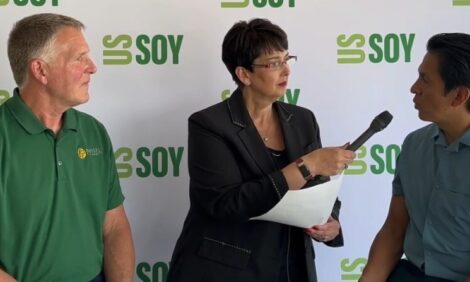



Leman: Current practices in oral fluid sampling
Oral fluid sampling is widely used for endemic disease monitoringOral fluid (OF) sampling has been widely used in the United States swine industry for at least a decade. This sample type has been rapidly adopted by industry for endemic disease monitoring as it optimizes time and resources when conducting population-based sampling.
A study by Xiaomei Yue and colleagues at the University of Minnesota and the National Pork Board, US, characterized the current use of oral fluid sampling in pig production systems in the US swine industry. The results of the study were presented at the 2024 Leman Swine Conference.
Two online questionnaires, conducted between June and October 2023, targeted field personnel and swine veterinarians to gather data on OF implementation, primary use, sampling protocols, handling, and processing procedures. Field personnel and swine veterinarians from a convenient sample of production systems were invited to participate.
Sixty-seven valid responses were received from 42 companies and clinics, representing an estimated studied population of 58 million growing pigs and 3.9 million sows. The population might be overestimated due to the overlap between company and clinic responses.
Widespread adoption of OF sampling was evident, with 99% of respondents familiar with or actively using it for diagnosis. Most respondents (69%) use one rope for every two pens, 21% use one rope per pen, while the remaining respondents employ alternative approaches, such as using three ropes per barn, two ropes per barn, or making determinations based on airspace/rooms.
The median number of ropes used per barn was 3. The median number of pens sampled per barn was 6, and the median number of pigs represented by a single OF-rope sample was 150. Pigs typically have access to the rope for a median of 20 minutes.
Sampling frequency for routine surveillance varies across farm types, with gilt-development units (GDU) collecting OF more frequently than sow and growing pig farms. Half of GDU respondents collect samples monthly while 33% do it weekly. Notably, 64% of respondents who used OF for routine surveillance increased sampling frequency in the face of clinical symptoms.
Most respondents reported having written protocols for sample handling, with 50% making these protocols available to farm personnel. Once samples are collected, 84% of the responses specified that the samples were stored in refrigeration or a cooler with ice. When OF samples are submitted to the veterinary diagnostic lab, the pig age was included in the submission form most of the time (91%), followed by the Premises Identification Number (83%) and whether clinical signs were observed (64%). Specific originating pens and barns are also mentioned when submitting OF samples in 47% of the responses.
Although a popular sampling methodology, oral fluids sampling strategies vary widely. Efforts for standardization of these procedures are necessary for interpretation across production systems.
(Image credit: Secure Pork Supply. Oral Fluid Collection Booklet: https://www.securepork.org/Res...)







